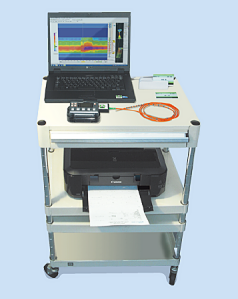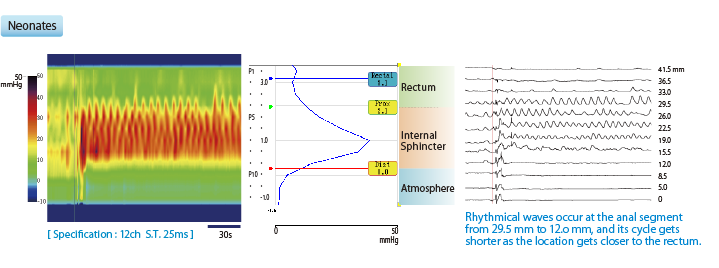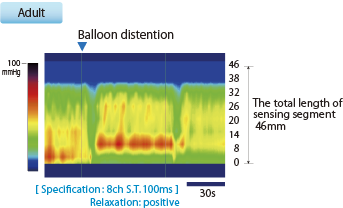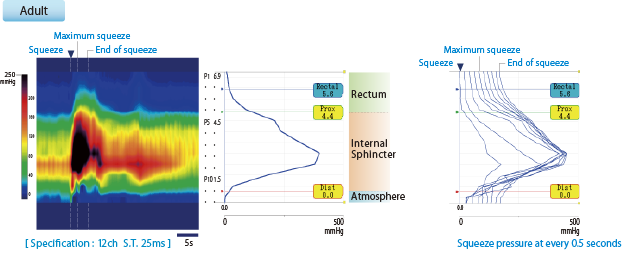 Assessment of Anorectal Function
Assessment of Anorectal Function
Mainly applied for the assessment of:
Anorectal manometry
Assessment of anorectal sensation
Assessment of anorectal compliance
Assessment of emptying function
Symptoms and
Pathology
Hirschsprung’s disease
Anal atresia
Anal sphincter dysfunction

Anorectal manometry system (GMMS4000/8L14)
*Refers to the assessment of anorectal disorders such as dyschezia attributable to anorectum.
| High Resolution Manometry |
 Reliable Monitoring for Neonates
Reliable Monitoring for Neonates
With the sensors placed densely, it makes the result of your measurement fully convincing. No reflex observed with this system? Then there is no chance it exists, and that’s that.
 Accurate Measurement
Accurate Measurement
Comparing to a measurement which requires a pull-through operation (for resting pressure), it provides more physiologically accurate measurement as the position of sensors remains still.

This sample of measurement was simply carried out by steadily positioning 2 sensors for the atmosphere and the rest, 10 sensors, for the anorectum to assess the anorectal rest pressure.
(Positioned 12 sensors)
![]()


The reflex stimulated by the distention of balloon can be identified even when the measuring site is shifted, because the sensing segment covers all across the target site with its total length of 46 mm.
![]()

This sample of measurement is for the assessment of anorectal pressure during squeeze. 10 sensors are positioned at 6 mm intervals in this study.
